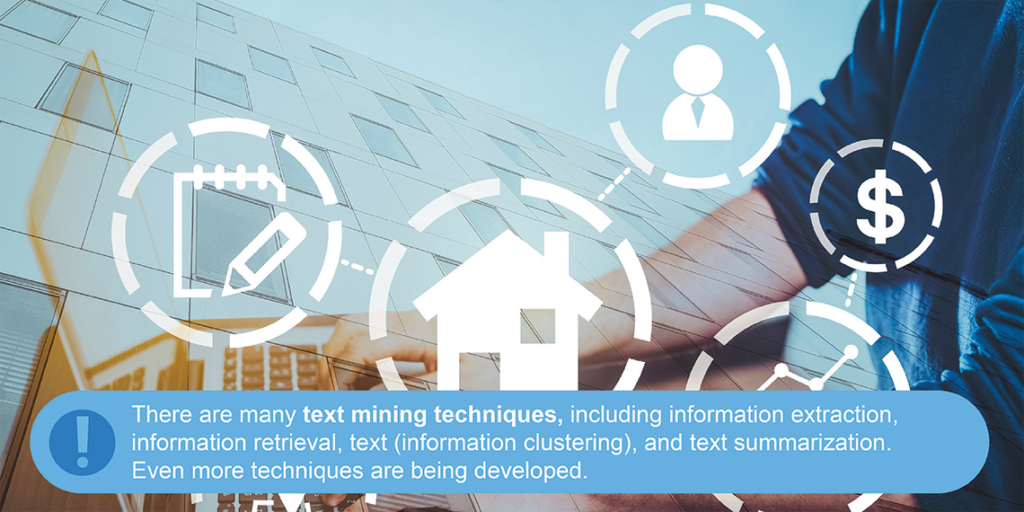We often talk about the massive amounts of data that are being produced and stored every day in the digital world. These mind boggling data sets are both a blessing and a curse for the marketing industry. On one hand, the right tools can allow marketers to know just about everything about their industries, their competitors, and their clients. On the other hand, the sheer volume of existing data makes parsing out meaning a task within itself.
This is exactly where text mining and text analytics come into play. Text mining uses advanced technology to scan or “read” texts and provide usable data points from otherwise overwhelming amounts of raw data. Text mining is a marketing tool that should not be overlooked in today’s climate.
Text Mining 101
Data mining “is a process used by companies to turn raw data into useful information. By using software to look for patterns in large batches of data, businesses can learn more about their customers to develop more effective marketing strategies, increase sales and decrease costs.” Data mining uses machine learning and/or artificial intelligence to mimic how a human being might learn, only at a vastly improved efficiency.
Text mining takes the concepts of data mining and applies it to the written word. Most text available in documents or on web pages is much like the article you are currently reading: a largely unstructured (from the computer’s perspective) wall of text. Text mining’s job is to parse this wall of text into meaningful and useable insights which can be presented to a human being in a readable format. In other words, the role of text mining is to do the following:
- Read unstructured text
- Turn unstructured text into structured data
- Turn structured data into identified data
- Analyze identified data
- Extract data analysis
- Store the useable information in a database
How Text Mining Works

That’s all good and dandy, but how the hell does it work? There are many text mining techniques being used today with even more being developed, but here are a few high level text mining concepts that explain the process:
Information extraction is perhaps the most used and most prevalent text mining technique. This relatively simple method of text analysis reads texts looking for attributes, facts, and other statements of interest. The text mining software simply extracts and stores these statements in the database for later use.
Information retrieval is similar to information extraction which also utilizes user behaviors to analyze which text is the most relevant. Think of a Google search that pops up with a simple answer to a simple question by pulling a simple statement from a third party site.
Text (information) clustering analyzes large swaths of texts and aims to group them into “clusters” to be analyzed further. This works by the text mining software looking for structures or key similarities in texts that essentially categorizes each. Many text mining techniques use text clustering as a preliminary step regardless of the end goal.
Text summarization is a more advanced form of text mining that actually produces an organized report. Rather than simply dumping data in clusters or answering a simple question, some text mining software is able to produce a human-like summary of key answers or takeaways in a readable format.
Incorporating Text Mining into Brand Strategy
As we always say in the marketing game, that’s all great, but how can I use it to improve my brand strength? With text mining, the applications for branding and marketing efforts are nearly limitless. Not only can text mining give your business access to data which might have been previously buried in market reports, but it may also be able to parse out and analyze that data to inform your future brand decisions. In a very real sense, text mining is also capable of the following:
- Determining B2B and B2B buying intent: By analyzing mentions, articles, social media posts, and much more, text mining software can identify key players in your industry and contextualize those mentions for a deeper understanding of your brand’s perception.
- Increasing automated email marketing effectiveness: Using past campaigns and text analyses of what worked and did not work for various customer subsets, your email marketing campaigns can be refined and improved.
- Analyzing public brand perception: In the past, brand perception was all about user ratings and questionnaire responses. With text mining, brands can actually “read” what their customers are saying about their brands and products on a massive scale.
Powerful Data Analysis Tools from Clock Tower Insight
At Clock Tower Insight, we turn data into business solutions. By maximizing brand positioning, CX management, moments of influence, and more, we help build our clients brands in the short and long term. Clock Tower Insight believes that happy customers equal a happy business. We work closely with clients to tailor their brand from top to bottom in order to maximize positive image, exposure, and sales.
To learn more about how we may be able to help your business grow, read about our 15 plus years of focused experience working with brands such as Starbucks, Kraft, McDonald’s, and much more.

